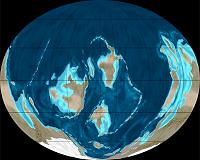| . |  |
. |
Washington DC (SPX) Feb 10, 2010 President Obama's visit to China before December's Copenhagen conference underlined views that the international strategy to tackle climate change truly hinges on cooperation between the United States and the developing Asian economies. This relationship, as represented in the Asia-Pacific Partnership (APP), is controversial to environmental analysts. In two papers published in WIREs Climate Change, analysts debate the significance of the APP and its role as an alternative to the Kyoto treaty. Launched in 2006, the APP is a non-treaty agreement between the United States, Australia, Canada, India, Japan, South Korea and, perhaps most importantly, the People's Republic of China. It is increasingly seen as a viable agreement between the United States and the emerging Asian economies, yet is criticised for not being legally binding. "[The APP] has been hailed as a new model for an international climate agreement and as an alternative to the Kyoto protocol," said Ros Taplin from Bond University in Australia. "However implementation has had challenges. As an opposing model to Kyoto it is a contravention of the United Nations Framework Convention on Climate Change's (UNFCCC) principle of common, but differentiated responsibilities." The APP's significant difference to Kyoto with regard to greenhouse gas emissions is that it requires participation by developing nations. This is seen as crucial by both the United States and Australia, who contend that it would be economically untenable for their countries to significantly cut their emissions without all countries taking action. "The APP is based around public private taskforces organised on a sectoral basis. In legal terms the partnership is a nonbinding, soft law" said Taplin, "It is a contributor to the crumbing of climate governance." Australia and the United States have also attempted to divert debate away from targets and timetables by adopting this sectoral approach. 170 projects have been initiated by taskforces, yet by mid-2009 only 7 had been completed. However, according to Aynsley Kellow from the University of Tasmania, the APP is far from dead and is an improvement over the "failure" of the Kyoto Protocols, providing important lessons for future climate change negotiations. "[Kyoto] has failed. It failed horizontally to secure commitments from important players and it failed vertically because of the lack of delivery of outcomes to those who did accede to it," said Kellow. "In comparison the APP represents a useful way forward." The Kyoto Protocols launched what Kellow calls "a rush to targets and timetables", and promised clear reductions in greenhouse gas emissions of around 5% by industrialised nations. However, between 1997 and 2004, emissions from countries that ratified the protocol increased by 21.1%, whereas emissions from the United States increased by 6.6%. "This is hardly a picture of policy success," said Kellow. "In contrast the APP is a non-binding initiative aimed at fostering technological development and transfer on a sectoral basis and sits alongside the G8+ 5, launched during the Gleneagles summit in 2006." Expectations for international cooperation post-Copenhagen may now be modest, but, argues Kelow, initiatives such as the APP and G8+5 should be seen as helping rather than hindering these negotiations. "We should be looking for silver buck-shot rather than a silver bullet in the quest for an adequate response to the risks of anthropogenic climate change." concludes Kellow, "The APP is one piece of shot, but a significant and helpful one nonetheless."
Share This Article With Planet Earth
Related Links WIREs Climate Change Climate Science News - Modeling, Mitigation Adaptation
 Predicting Changes In Global Sea Level
Predicting Changes In Global Sea LevelWashington DC (SPX) Feb 10, 2010 10 percent of the world's population lives within 10 meters of sea level. Currently, climate models including those produced by the Intergovernmental Panel on Climate Change (IPCC) predict a 50 centimeter to possibly over one meter rise in sea level over the next 100 years, posing a threat to inhabitants of low-lying coastal communities around the world. To better understand what drives ch ... read more |
|
| The content herein, unless otherwise known to be public domain, are Copyright 1995-2010 - SpaceDaily. AFP and UPI Wire Stories are copyright Agence France-Presse and United Press International. ESA Portal Reports are copyright European Space Agency. All NASA sourced material is public domain. Additional copyrights may apply in whole or part to other bona fide parties. Advertising does not imply endorsement,agreement or approval of any opinions, statements or information provided by SpaceDaily on any Web page published or hosted by SpaceDaily. Privacy Statement |